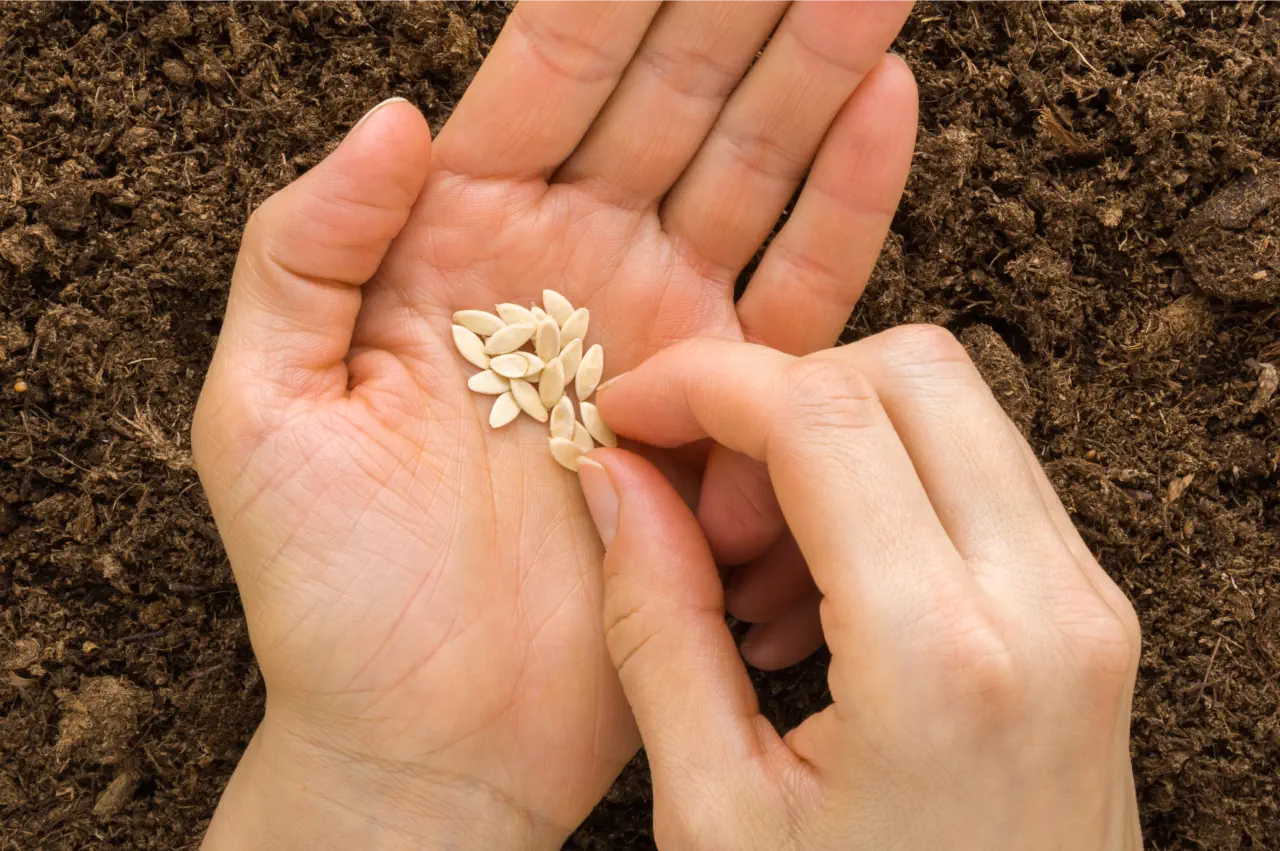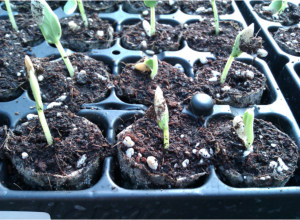March marks the official start of spring, bringing longer days, warming temperatures, and the perfect opportunity to get your garden ready for the growing season.
Here’s a comprehensive list of key gardening tasks to tackle this month....

No summer salad would be complete without a few slices of cool cucumber. Cucumber also works well with an array of sandwich fillings or on its own as in the traditional cucumber sandwich with crusts removed. However you like your cucumbers, they are relatively easy to grow from seed, providing you with a fresh supply throughout the summer months. They can be grown under cover in cloches, in the greenhouse or out in the garden. They can also be grown in a variety of containers, grow bags or simply planted out directly into the vegetable plot or allotment.
Cucumbers are native to India and will not tolerate the cold, so as a general rule you should find out when the last frost is due in your area and then sow the seeds about 4 weeks prior to that date. In most cases this will be from mid to late April. You can also sow throughout May, especially if you are planning on producing a long continuation of fruits or prefer to harvest your cucumbers a little later in the summer.
Alternatively, if you have a heated greenhouse then you can sow from late February to mid-March. Sowing dates will also depend on whether you intend to grow indoor varieties, which tend to be long and smooth or outdoor (ridge) varieties, which are shorter with rough, bumpy skin.
For outdoor varieties, seeds can be started off on a warm window sill or in a cold greenhouse from late April. Place seeds on their side or with the pointed end facing upwards, two per pot of seed compost and about 2 cm deep. Water well and leave to germinate. The seeds should germinate within 5-7 days. Remove the weaker of the two seedlings and ensure the pots are positioned where they will be warm and get plenty of light.
Continue to nurture the plants, feeding once a week, and plant out into their final growing positions after 4 weeks. If weather conditions permit, the seeds can be sowed directly outdoors into prepared planting beds, containers or in grow bags during May or June.
We have taken the first of several batches of cucumbers out of the germination room this week which we use to test germination, and we are really pleased with the germination. Pictures below of three of the varieties - these are five days since sowing.
For most people, sowing in April is early enough as Cucumbers do not like the cold, especially frosts and cold winds which will kill them dead! So find the last frost date in your area and sow about 4 weeks earlier so you have plants ready for planting around that time.
 |  |  |
| Cucumber Mini Munch | Cucumber Passandra | Cucumber Femspot |
| Mostly, people will tell you to sow cucumbers on their side. Just to be difficult we do it differently, and sow the cucumber seed on end. Firstly, it is important to realise that there is a right end and wrong end to the seed. Each seed has a 'sharp point' where it was attached to the fruit, and a 'blunt end'. (See the picture to the right.) The 'sharp end' is the end that wants to be pointing upwards. Take the seed between 2 finger nails and push the blunt end in to the compost until it is half in / half out - and that's it! |  |
| We sow into the small peat pellets, and you may find it easier to do the same although sowing into small pots will be fine. We like to do this as it means we can pot them on into larger pot when we want, we are not waiting for roots to make a rootball first. Once sown, water and place in a warm location - and we mean warm - remember cucumbers are from the tropics. In 5 to 7 days the seedlings will start up show and push themselves out the compost. Move them somewhere where they will get plenty of light, but still keep them warm, frost free and feed once a week. If you have sown in a peat pellet they will need potting on after 2 weeks, else the plants will be ready to plant out in their final growing position about 4 weeks after sowing, so time it to the last frosts in your area. | |
 |  |
Cucumbers will require a warm and sunny outdoor position, which should have been previously well prepared. For best results, prepare the planting area by digging in plenty of well-rotted organic matter during the autumn or winter months. Prior to planting you might want to consider whether your cucumbers plants will need support, in the form of canes, wires and netting, or whether you will allow them to sprawl across the ground. If you decide on the latter option then its best to spread straw over the planting bed to protect the fruits from damage. Set out the young plants at 45cm apart and apply a sprinkling of a general granular fertiliser around the base of the plants. It’s important to only plant out the young plants when you are absolutely sure that all danger of frost has passed.
It’s advisable to apply a mulch to the base of outdoor plants to help retain moisture. Once the plants become established and begin growing freely, pinch out the main growing stem after 7 leaves have formed. Unlike greenhouse varieties, there is no need to remove any flowers from outdoor cucumbers. It’s very important to ensure you keep the plants well-watered at all times as cucumbers are made up of around 96% water. Applying water little and often is best to prevent the fruits from splitting. To help boost the yield and to encourage healthy plants, feed them with a potash based fertiliser or liquid feed every 2 weeks after the fruits have begun to develop.
After about 8-10 weeks from sowing or when the cucumbers are about 25cm long, you can begin to harvest your crop. The fruits develop very quickly during warm and sunny periods so best to keep a close eye on them and pick them as soon as they are sizeable. It’s best to always cut cucumbers from the plant with a sharp knife during the morning or evening. Regular cutting will also encourage further production of flowers and fruits. Remove and discard any fruits that are turning yellow or not developing properly. If the cucumbers are left on the parent plant too long they will become quite bitter, especially as the seeds develop. During the summer months you should have an abundance of fresh cucumbers, which is just as well because they will only keep for about 1 week in a refrigerator.
Slugs and snails love eating the soft watery tissue of young cucumber leaves, stems and fruits so preventative measures should be in place. Some of the most effective methods of control include, beer traps, copper tape, crushed egg shells, wood pellets, grit or ash, coarse sand and ground coffee beans. Slugs and snails find it difficult to travel over sharp or loose surfaces so many of these methods should help to discourage them. Slug pellets are a very effective option but could harm the wildlife that feeds on slugs and snails such as birds, hedgehogs, newts and toads. In fact, encouraging these animals into the garden makes for a good natural defence against slugs and snails.
Other pests include aphids, which can be treated with a neem oil, mild detergent and water solution. Cucumber beetles can sometimes be a problem, in which case a dusting of Sevin Dust should work well. It’s also a good idea to plant nasturtiums or marigolds in close proximity to outdoor cucumbers as they can form a natural deterrent against cucumber beetles.
There are several cucumber diseases including various fungal infections such as Anthracnose, Alternaria Leaf Blight, Downy Mildew and Powdery Mildew plus Fusarium Wilt and Verticillium Wilt. Most fungal infections can be successfully treated with a proprietary fungicide except for Verticillium Wilt, which is a soil borne fungus, and for which there is no chemical control.
Cucumbers are also susceptible to bacterial infections such as Bacterial Leaf Spot and Bacterial Wilt, for which there are no effective treatments. Cucumber Mosaic virus can affect cucumbers and the only effective method of control is good hygiene and management, which includes removing all infected plant parts, keeping whitefly infections under control and disinfecting tools and equipment. You should always select quality virus free seeds.
If you are not sure what varieties to grow, then these are ones we would recommend.
Bush Chamion is an outdoor bush variety, suitable.....
Packet Content: 15 Seeds
Cucumber Femspot is one of the best selling varieties for the home.....
Packet Content: 5 Seeds
Cucumber Mini Munch produces a high yield of 'snack sized' fruits.....
Packet Content: 5 Seeds
Cucumber Party Time produces a high yield of 'snack sized' fruits.....
Packet Content: 5 Seeds
Remember if you are going to sow Cucumber Seeds - The plants are not hardy, you'll need to provide good frost protection.
Have you got any Cucumber Growing Tips? Leave a comment below and let everyone know....
All blog content on this page is copyright of SimplySeed and is not to be reproduced without prior written permission. ©
Learned something new as i`ve always sown my cucumber seeds about 1/2 inch deep and not as you have part in part out.
That was really helpful! Will try planting technique soon!